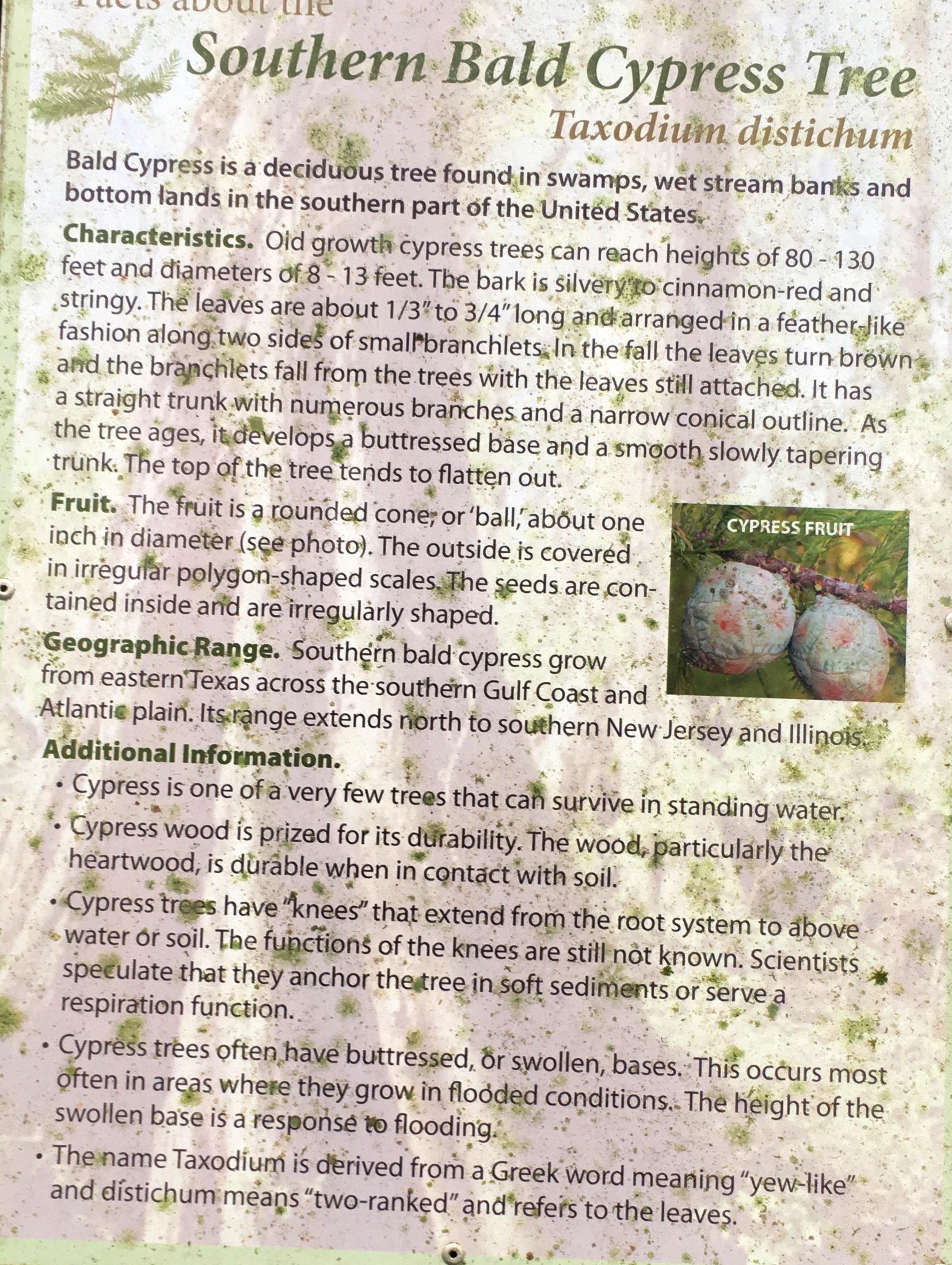Photograph as originally submitted to
this page in the Historical Marker Database
www.HMdb.org.
Click on photo to resize in browser. Scroll down to see metadata.
Photographer: Brandon D Cross
Taken: September 13, 2020
Caption:
Southern Bald Cypress Tree Descriptive Panel | Additional Description: Bald Cypress is a deciduous tree found in swamps, wet stream banks and
bottom lands in the southern part of the United States.
Characteristics. Old growth cypress trees can reach heights of
80–130 feet and diameters of 8-13. The bark is silvery to cinnamon-red and
Stringy. The leaves are about 1/3” to Ύ” long and arranged in a feather-like
fashion along two sides of small branchlets. In the fall the leaves turn brown
and the branchlets fall from the trees with the leaves still attached. It has a
straight trunk with numerous branches and a narrow conical outline. As the
tree ages, it develops a buttressed base and a smooth slowly tapering trunk.
The top of the tree tends to flatten out.
Fruit. The fruit is a rounded cone or ball about one inch in diameter
(see photo). The outside is covered in irregular polygon-shaped scales. The seeds
are contained inside and are irregularly shaped.
Geographic Range. Southern bald cypress grow from eastern Texas
across the southern Gulf Coast and Atlantic plain. Its range extends north to
southern New Jersey and Illinois.
Additional Information.
Cypress is one of a very few trees that can survive in standing water.
Cypress wood is prized for its durability. The wood, particularly the
heartwood, is durable when in contact with soil.
Cypress trees have “knees” that extend from the root system to above
water or soil. The functions of the knees are still not known. Scientists
speculate that they anchor the tree in soft sediments or serve a
respiration function.
Cypress trees often have buttressed, or swollen, bases. This occurs most
often in areas where they grow in flooded conditions. The height of the
swollen base is a response to flooding.
The name Taxodium is derived from a Greek word meaning “yew-like”
and distichum means “two-ranked” and refers to the leaves.
Submitted: September 24, 2020, by Brandon D Cross of Flagler Beach, Florida.
Database Locator Identification Number: p540077
File Size: 1.507 Megabytes
To see the metadata that may be embedded in this photo, sign in and then return to this page.
